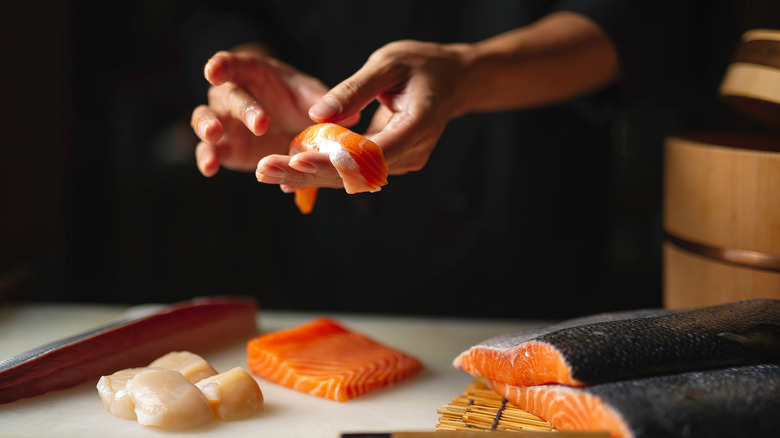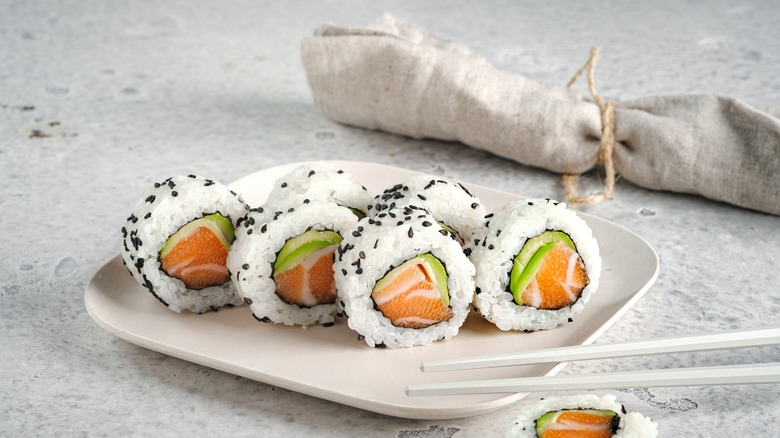How The Spread Of Buddhism Brought Sushi To Japan
Sushi is one of the most popular styles of food in the world today. Food Truck Empire reports that there are more than 4,000 sushi restaurants in the U.S. alone that make up a market of more than $22 billion. There are a wide variety of different sushi styles out there — including maki, nigiri, and sashimi — but most of the dishes referred to as sushi are typically defined as a combination of rice and raw fish. This food has ancient roots that predate any type of refrigeration technology and was likely first developed as a means to preserve fish and rice for later consumption (via PBS).
According to How to Sushi, though most people associate sushi with the Japanese, it seems to have actually originated in China. The art of sushi then traveled along a familiar trade route from China through the Korean peninsula to the island nation. Asia Society notes that this trade route was also responsible for spreading the religious practice of Buddhism to Japan, and the evolution of the two cultures likely spread there together.
Buddhism encouraged swapping meat for fish
Early accounts report that Buddhism was likely brought to Japan from China in the sixth century (via Asia Society). PBS reports that by the time sushi followed in the ninth century, the Buddhist practice of abstaining from eating meat would have been a common practice in the region. Eating sushi then would have made for a natural replacement in the diet of many Japanese Buddhist practitioners.
PBS notes that Lake Biwa was one of the earliest sites for sushi production. Golden carp were captured from the lake and fermented with rice there to produce nare-zushi, or aged sushi. This type of practice is still common in Shiga prefecture, where Lake Biwa is located (via Japan Guide). According to Japan Heritage, the lake itself is also the site of religious adoration, and the Hieizan Enryakuji Buddhist temple can still be seen overlooking the lake today.

